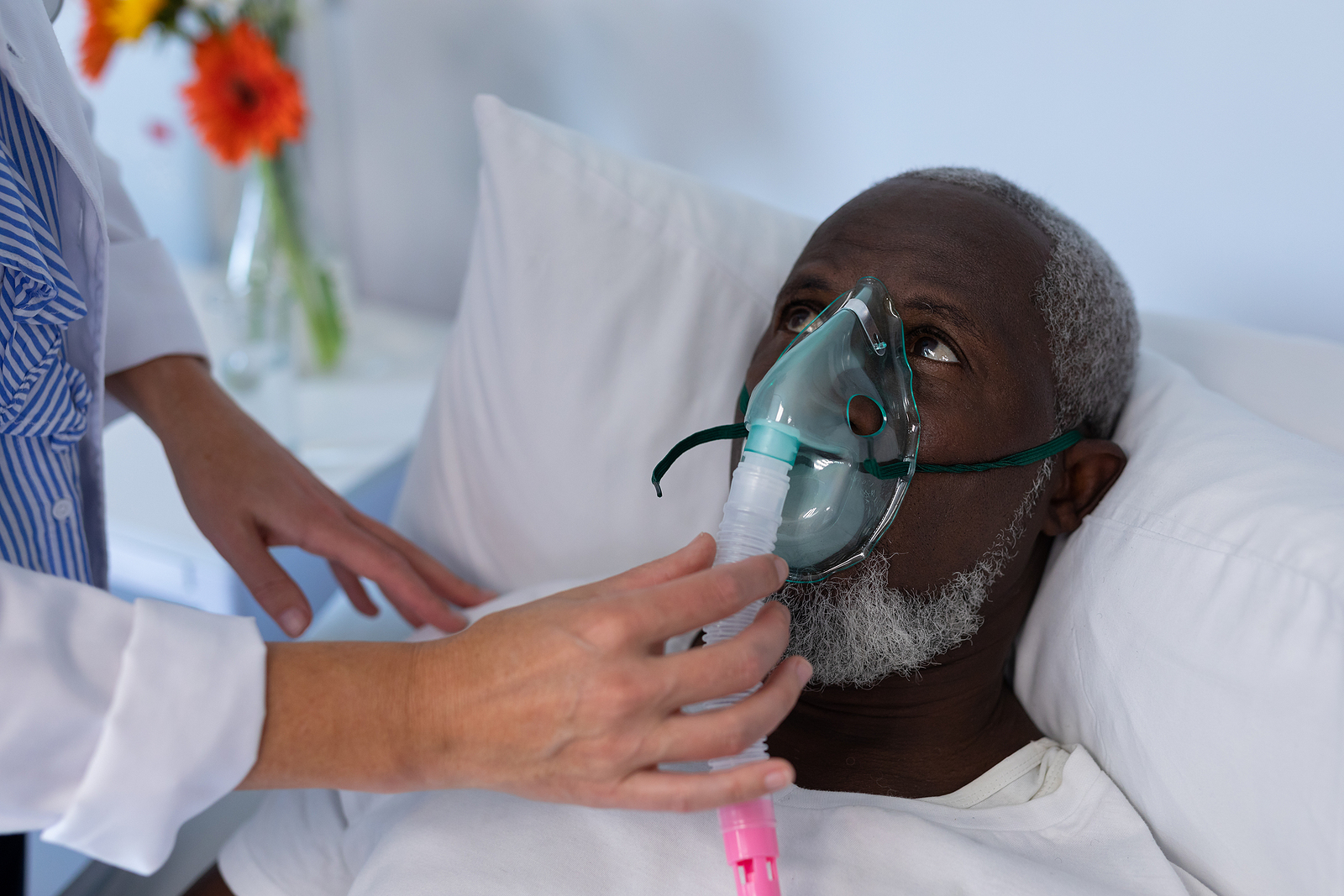Newsletter 2021
Newsletter March 2021: The art of swimming in a sea of restrictions
Gabriel M. Gurman, MD
Chief Editor
This new year, 2021, did not bring any significant improvement regarding the impact of the COVID-19 pandemic on the main tasks of healthcare providers.
In most countries, the number of infected patients constantly increases, as well as of those in need of heroic treatment, such as artificial ventilation and/or ECMO. As a result, there is a permanent increase in mortality, mainly because of the severity of the disease in the presence of serious comorbidity and advanced age. The world is waiting for the beneficial effects of massive vaccination, but the results are to be expected not earlier than summer.
Paradoxically or not, the pandemic affects not only people infected by the virus. The increasing number of COVID-19 patients, and especially the poor medical condition of a high percentage of those admitted to a hospital, obliges the healthcare authorities to adapt to the new situation and change a good part of the routine activity of each medical institution.
For example, it is still the case that a lot of medical resources are redeployed for care to intensive care (ICU) patients and for emergency departments (1). This reality affects the staff of most departments, surgeons and anaesthesiologists alike. As a result, volens nolens, the anaesthesia departments have to face this situation, and the first victims are surgical patients planned to have what is called in our terms “elective surgery” or “surgery of lower acuity”.
Prachand et al (2) enumerate the categories of situations and procedures included in this definition: malignancies, alleviation of pain, improvement of quality of life, prevention of further complications, etc.
So, the abrupt changes in the routine activity of each hospital demand new measures and we must accept the fact that the surgical and (needless to say) anaesthesia schedule is to be seriously modified, in the sense of significant reduction of operating rooms (OR) activity.
No, the ORs are still open and emergency surgery is still performed on a 24/7 basis, but elective surgery is tremendously reduced these days.
Besides, many of our colleagues have been “relocated” to those floors and wards where patients in critical condition are treated. Our expertise is absolutely necessary in the case of artificial ventilation and stabilisation of vital signs.
But the situation is much more complicated.
One must admit that continuous and direct contact with patients in the OR, without having any idea if some of them are already virus carriers could influence the willingness of the surgical and anaesthesia staff in performing surgery and, at least theoretically, put in danger their own health.
More than this, admitting patients to the hospital for a non-emergency surgical procedure could represent a danger for the patient since he/she might get in contact with virus carriers.
All of the above must convince everyone that what was true and just a routine a year ago it is no longer acceptable and things are to be changed accordingly.
Above the ethical questions related to the new attitude towards patients who badly need surgical/anaesthetic help, the question which arises is how could the medical administration separate cases with a clear need for surgical intervention from those who can wait, without jeopardising their life or wellbeing.
This is a subject that could lead to unfair decisions and affect a good part of the population, who expect help and understanding rather than facing the postponement of the necessary assistance.
In other words, how would be possible to decide who, in spite of all the above, could be operated on, even if his/her medical condition is not an urgent one?
As we know from our daily practice, sometimes numbers might help.
This common notion brought Prachand and his colleagues (2) to develop a series of criteria that, transformed in numbers, could offer the practitioner the key for solving the dilemma.
They created a scale of details that are to be taken into consideration regarding the patients who are to be admitted for an elective surgical procedure.
It includes:
- surgery characteristics (OR time, anticipated blood loss, surgical team size, surgical site, etc.);
- surgical disease factors (procedure expected efficiency, the impact of the delay on the outcome and disease risk);
- comorbidity factors (COPD, diabetes, immunocompromised host, etc.).
Each factor gets a point, from 1 to 5. The higher the accumulated number of points, the lower the chance for the patient to be accepted for a surgical procedure during the pandemic.
Here is the way the authors explained the importance of using the proposed scale: “a higher cumulative score, which can range from 21 to 105, is associated with poorer perioperative patient outcome, increased risk of COVID-19 transmission to the healthcare team, and/or increased hospital resource use.”
In other words, a higher score means that surgery is not justifiable, at least for the time being.
One can argue that the process of quantifying all the above criteria could be a difficult one, or even not too precise.
But in the absence of any other tool, the proposed scale could be used in each hospital, thus avoiding unnecessary danger for both patients and medical staff.
Besides the need to assess every single candidate for elective surgery according to well-established criteria, one cannot overemphasize the importance of administrative measures which would assure the continuation of the OR activities in the new atmosphere created by the presence of the COVID-19 pandemic.
This is why some American professional organisations proposed a series of guidelines regarding the surgical/anaesthesia activities during this period.
Their common statement (3) suggests that the organisational efforts during this difficult period should be done in the following directions:
- *regional cooperation between the various medical institutions
- *assurance of the good functionality of the supply chain of all the material and drugs needed for the normal functionality of the ORs
- *needed facilities for regular COVID-19 testing in order to protect staff and patient safety
- *providing the necessary personal protective equipment in an amount appropriate to the number and type of procedures to be performed
- *case prioritisation and scheduling, according to well-established criteria
- *all the necessary measures to avoid cross-contamination of patients and staff
Presenting all the details which have been published in the last period of time would be beyond the scope of this paper.
But one more debate would help our readers to better understand the complexity of the situation created by COVID-19.
Recently, the esteemed publication, the New England Journal of Medicine, hosted a very interesting discussion about the policy on elective surgery during the COVID-19 pandemic (4).
A “classical” situation is presented, about a hospital in which almost all the ICU beds have been occupied, and there is only limited personal protective equipment. Three experts are asked what do they advise regarding the performance of elective surgery in that very medical centre.
As expected, the opinions expressed in the paper substantially differed from one to the other.
The first one considered that continuing the performance of elective surgery is perfectly reasonable, since “most patients undergoing elective surgical procedures do not need ICU beds and intensive nursing support…..”.
The next one completely opposed to the first one. The author strongly recommends deferring all elective surgical procedures, especially those that can be safely delayed without substantial risk to the patient. This would ensure that the first-line staff would have adequate protective equipment since supplies are limited.
Needless to say, the third one proposes a real compromise between the first two opinions. It says: proceed with scheduled elective surgical procedures, but defer new cases. This policy would maintain hospital financial viability. But full attention has to be paid to give priority to those patients with a predicted short stay in the hospital and also to those for whom a same-day discharge is expected.
One more suggestion is proposed: the need to create in each hospital separate floors for COVID-19 and non-COVID-19 patients.
I would recommend our readers to obtain copies of the papers mentioned in the References rubric and try to adapt the proposed guidelines, opinions and regulations to each hospital-specific activity.
The current situation is one of war, a war against a pandemic which could go on and reach a stage of chaos, disorganisation and increasing number of complaints and also jeopardise the health of medical staff.
I can imagine that all over the world the medical administration already took the necessary steps in order to cope with the situation created by the current pandemics, but the continuation of this unusual and dangerous reality obliges everybody to stay alert and be able to judge all the proposals coming from experts.
It is our duty towards our patients and towards ourselves.
References
- American College of Surgeons Recommendations Concerning Surgery Amid the COVID-19 Pandemic Resurgence Online October 27, 2020
- Prachand VN et al. J Am Coll Surg 2020;231:281e288
- Joint Statement: Roadmap for Maintaining Essential Surgery during COVID-19 Pandemic (Nov. 23, 2020). American College of Surgeons, American Society of Anesthesiologists, Association of Perioperative Registered Nurses, American Hospital Association
- *** Case vignette. A committee deciding policy on elective surgery during Covid 19 pandemic. N Engl J Med 2020;383:1787
Read More of our Monthly newsletter.
Read More of our special newsletter covering our virtual congress.
Visit our COVID-19 Resource Hub for other news and resources.











